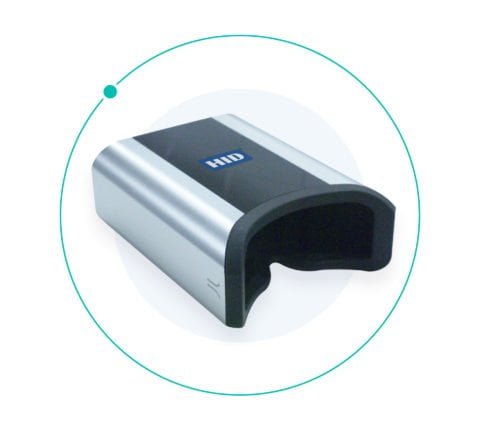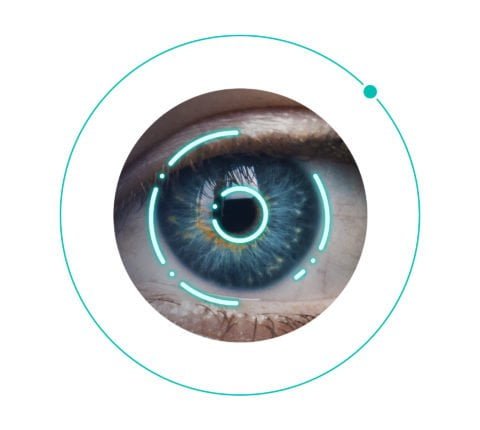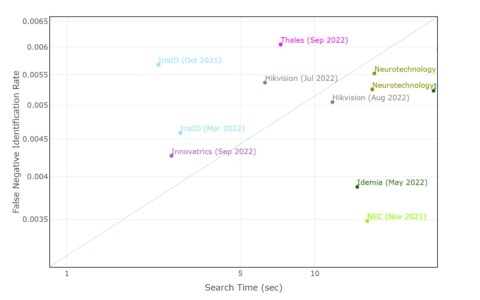What is iris and iris recognition technology?
The iris, situated at the front of the eye, is a pigmented, circular muscle that governs the diameter of the pupil, controlling the quantity of light entering the eye to ensure optimal vision. Its function is essential for regulating the pupil’s size, thereby maintaining the appropriate amount of light necessary for clear vision.
Iris recognition technology is a biometric authentication method that identifies individuals based on the unique patterns within their irises, the colored portion of the eye surrounding the pupil which distinguishes it from retina scanning. It relies on high-resolution images of the iris, captured using specialized cameras or scanners, to extract distinct features such as the arrangement of furrows, crypts, and rings. These features are then converted into a digital template, which is stored in a database for comparison during authentication. When an individual seeks authentication, a new image of their iris is captured and compared to the stored templates using pattern-matching algorithms. If there is a sufficient match, the individual’s identity is verified. Iris recognition technology is known for its accuracy and reliability, as iris patterns are highly distinctive and stable over time. It finds applications in various sectors, including border control, law enforcement, access control, and identity management.
What are the benefits of iris recognition?
The benefits of iris recognition technology span various sectors, offering heightened security and streamlined processes. One key advantage is its application in enhancing security measures in public spaces and private institutions like banks, schools, and airports. By accurately identifying individuals based on their unique iris patterns, the technology aids law enforcement in swiftly identifying people of interest, preempting potential threats, and ensuring public safety. Moreover, iris recognition expedites identity verification processes at checkpoints, airports, and borders, simplifying administrative tasks such as banking transactions and workplace access. Its non-intrusive nature makes it a convenient and user-friendly authentication method, minimizing the need for physical contact and reducing the risk of unauthorized access. Overall, the benefits of iris recognition technology encompass enhanced security, streamlined processes, convenience, and personalized experiences across diverse industries and applications.


